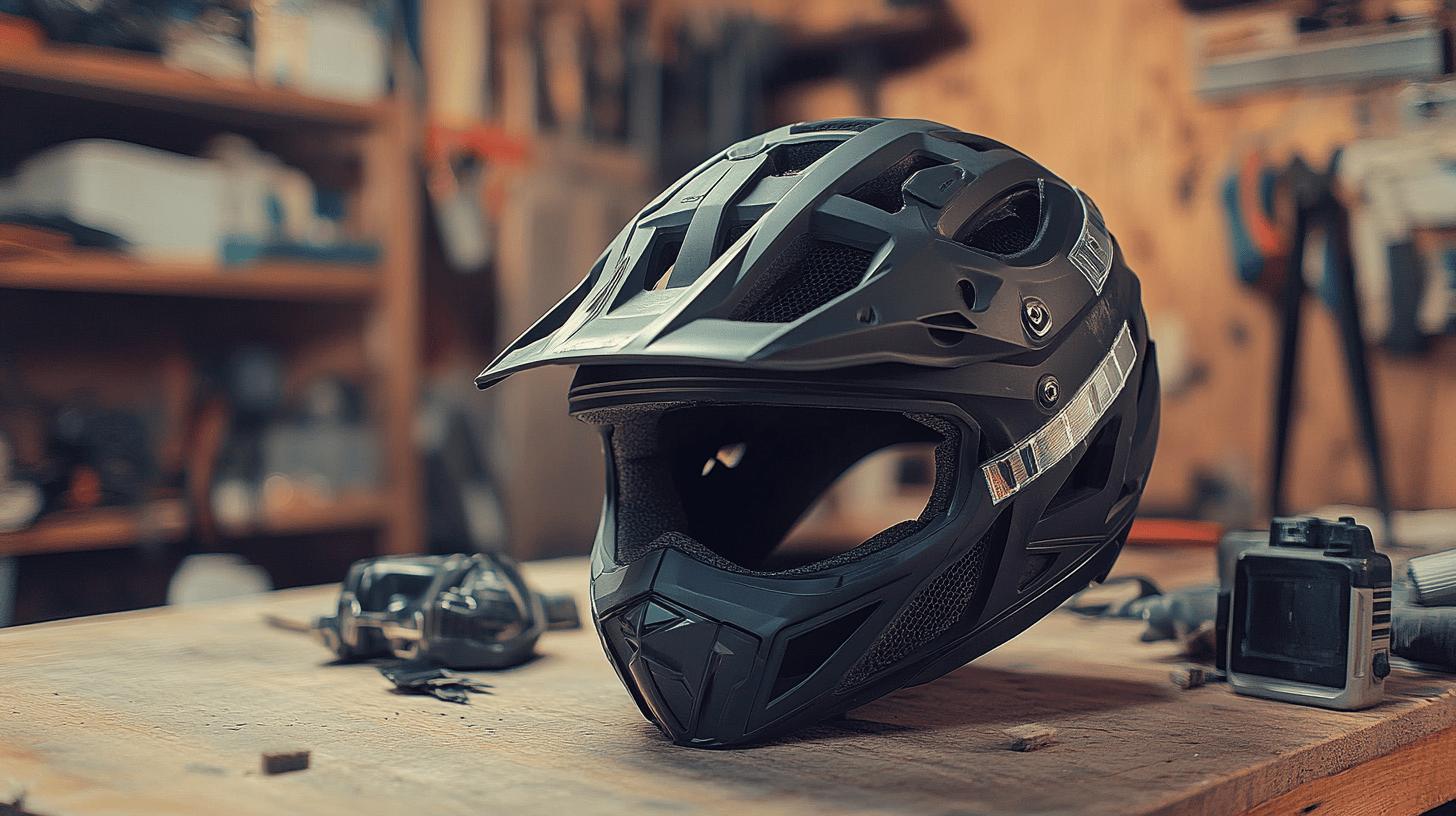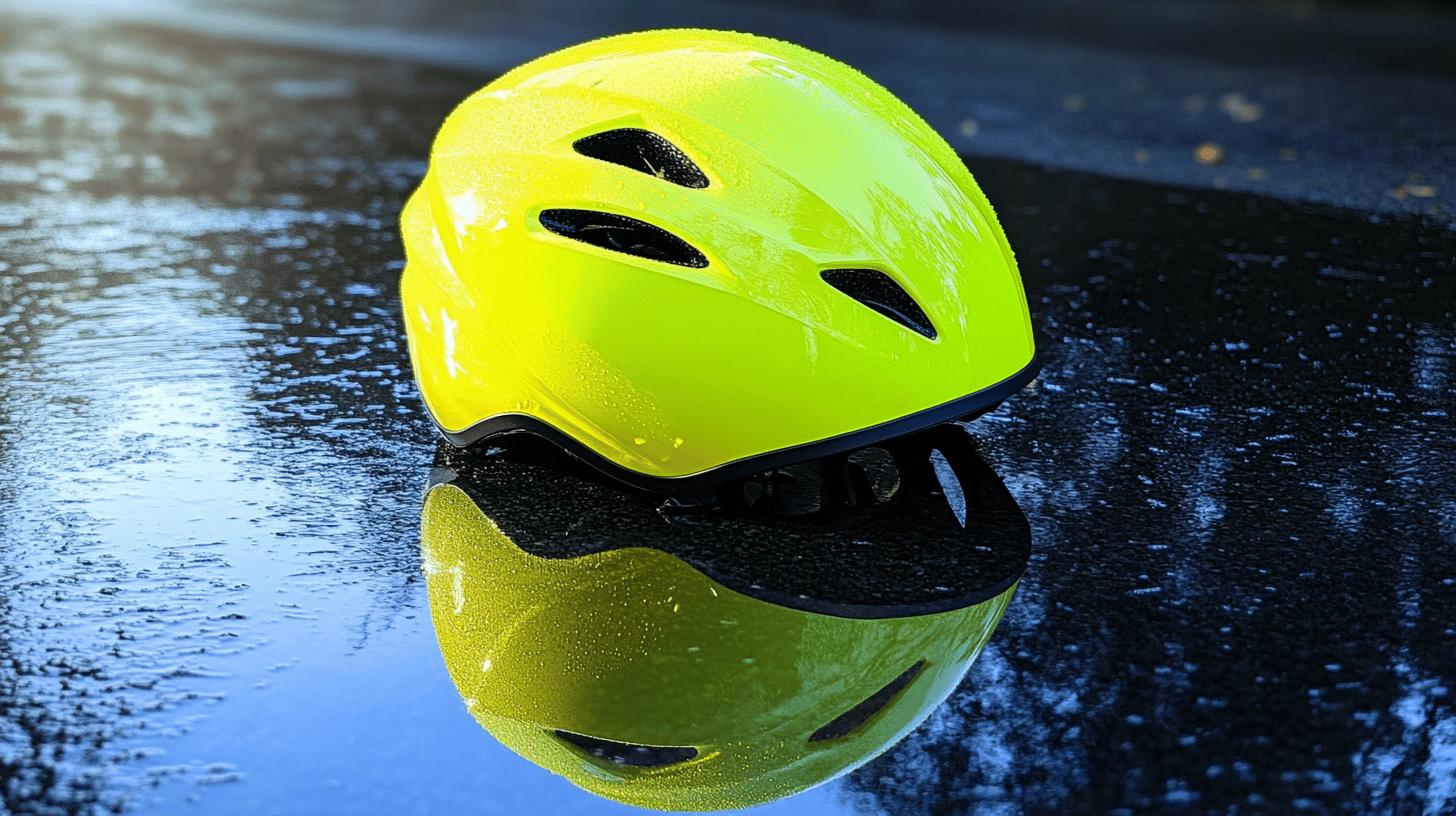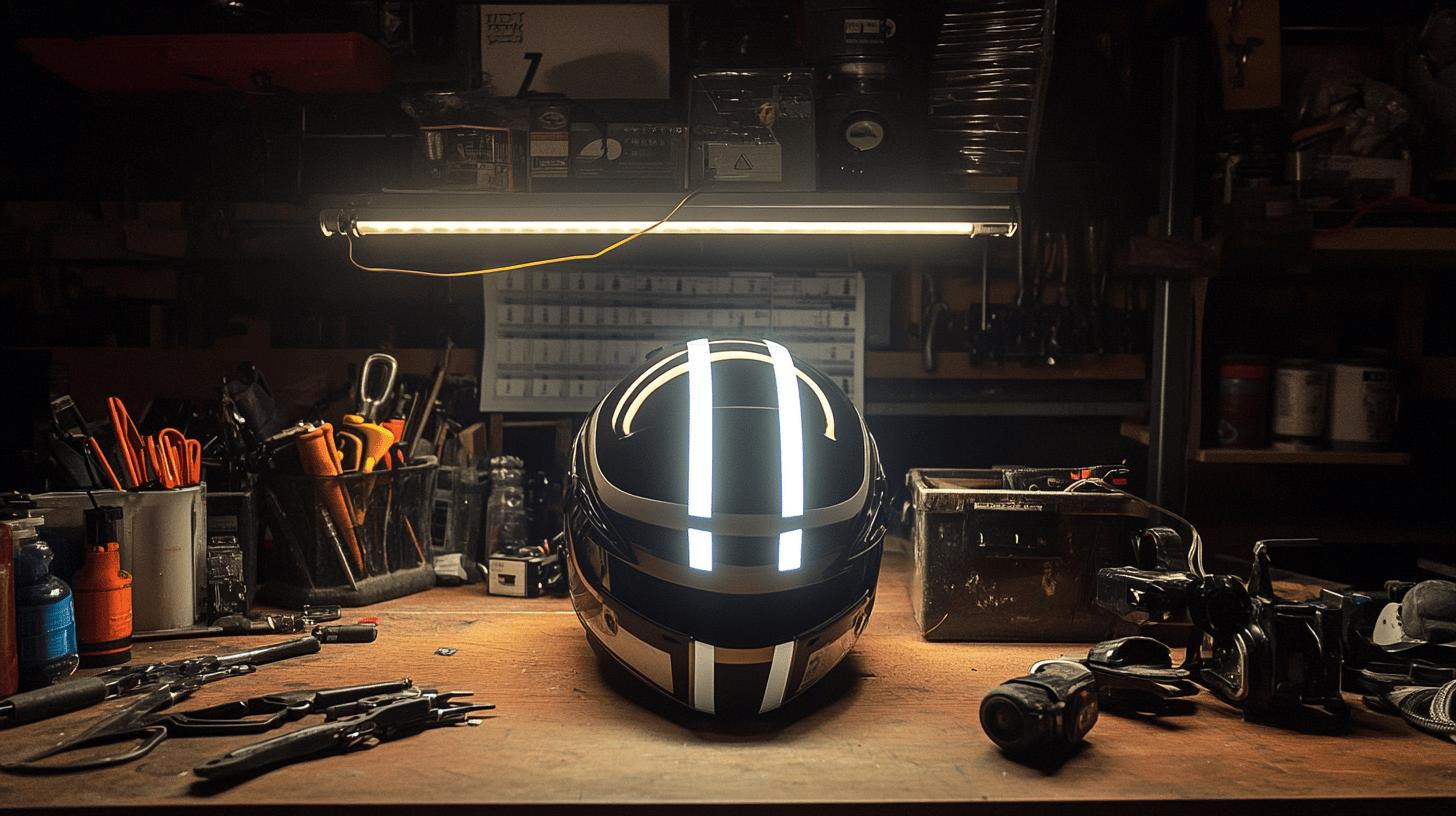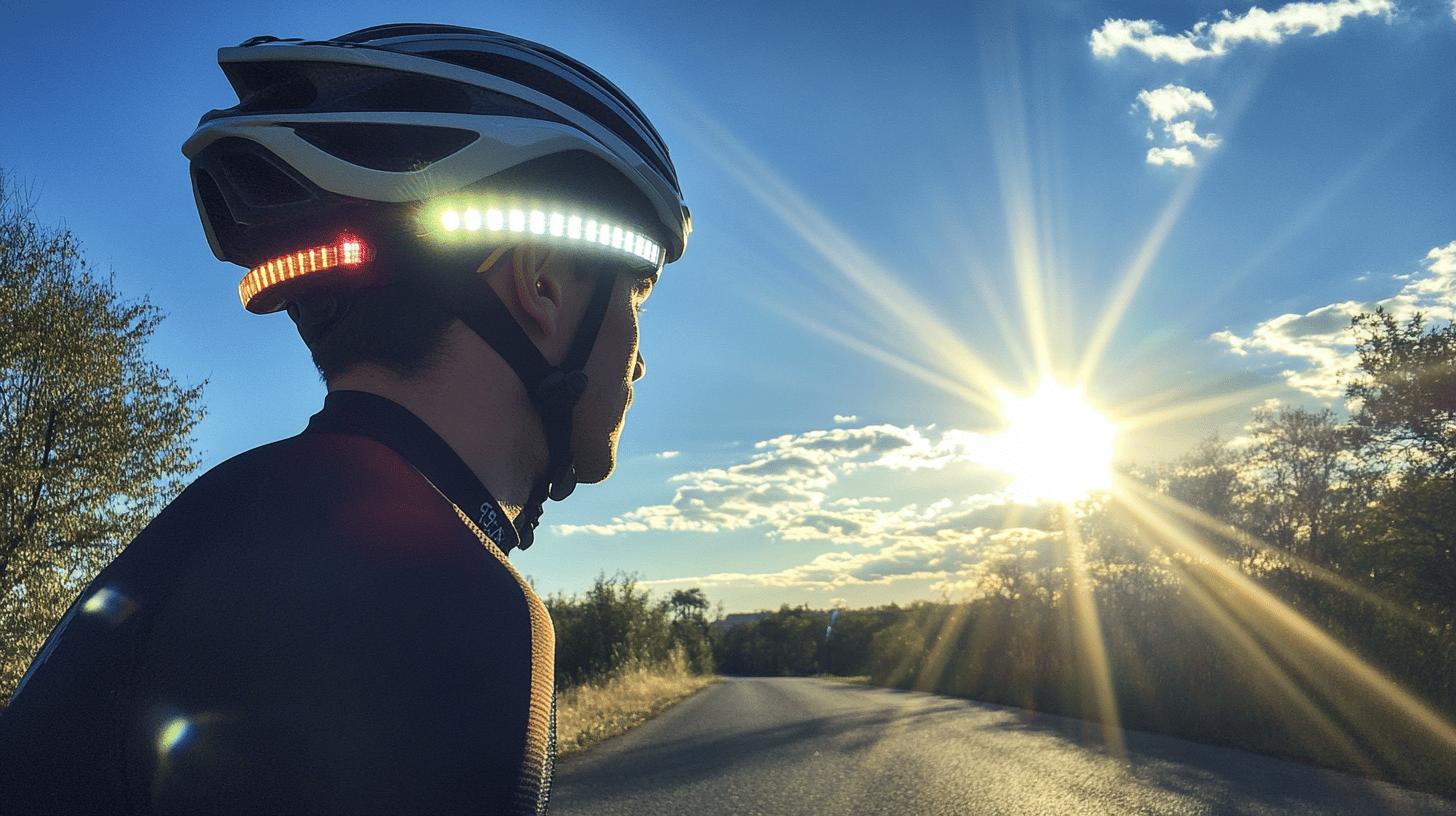Have you ever wondered if your motorcycle helmet is visible enough, especially during those low-light rides? Enhancing helmet visibility is not just about safety; it’s about making sure you stand out on the roadway.
"Make My Motorcycle Helmet More Visible Today" offers actionable insights to transform your ride into a beacon of safety.
We’ll explore how simple adjustments like applying reflective materials, opting for bright colors, and installing LED lighting can drastically improve your helmet’s visibility. Dive into this guide to learn strategic methods that will boost your helmet's prominence and safety.
Increasing Helmet Visibility with Reflective Materials

Reflective stickers and tape are highly effective in enhancing motorcycle helmet visibility, especially during low-light conditions. These materials work by reflecting vehicle headlights, making the rider more noticeable to other drivers. Reflective stickers can be strategically placed on various parts of the helmet, such as the sides and rear, to maximize visibility from multiple angles.
Similarly, reflective tape offers flexibility in application, allowing riders to customize their helmets' visibility profile effectively. The use of these materials is particularly advantageous for those who frequently ride at night or in dimly lit environments where the risk of not being seen is higher.
Dark-colored helmets, such as black models, can particularly benefit from the addition of reflective panels. These panels significantly enhance visibility by creating a contrast against the helmet's dark background, which can otherwise blend into the surroundings.
Reflective panels are designed to catch and reflect light, making them an ideal choice for riders who prefer darker helmet colors but do not want to compromise on visibility. By increasing the helmet's ability to reflect light, these panels ensure that the rider stands out, improving safety on the road.
-
Clean the helmet surface thoroughly to remove dust and oil before applying reflective materials.
-
Plan the placement of stickers and tape to cover areas visible from multiple angles.
-
Use a squeegee or similar tool to smooth out air bubbles during application.
-
Opt for high-quality reflective materials that are weather-resistant for durability.
-
Avoid placing stickers or tape near ventilation areas to maintain helmet functionality.
Bright Helmet Colors for Enhanced Visibility

What are the benefits of using solid white and fluorescent-colored helmets? Solid white helmets are highly visible because they reflect light effectively, standing out against a variety of backgrounds.
Fluorescent colors like yellow and orange also provide excellent visibility, particularly in low-light conditions. These colors make the rider more noticeable to other motorists, thereby reducing the risk of accidents. Their ability to catch and reflect light ensures that they remain visible, even when environmental lighting changes.
How do these helmet colors manage heat? These bright colors are less heat-absorbent compared to darker shades. Solid white reflects sunlight, keeping the helmet cooler during hot weather.
Similarly, fluorescent colors do not absorb as much heat as darker ones, contributing to a more comfortable ride in warm conditions. This dual advantage of enhanced visibility and effective heat management makes these colors an excellent choice for riders prioritizing both safety and comfort.
Can helmet color choices express personal style while maintaining safety? Yes, riders can balance personal expression with safety by selecting vibrant helmet colors.
Many manufacturers offer helmets in a variety of bright shades, allowing riders to choose colors that reflect their personality without compromising visibility. This approach ensures that riders are both stylish and safe, as vibrant colors naturally draw attention and improve road presence.
Installing LED Lighting for Helmet Visibility

What are the advantages of using LED lights on helmets for increased road visibility? LED helmet lights significantly enhance a rider's presence on the road by providing dynamic visibility that catches the attention of other motorists. These lights are known for their brightness and can be seen from greater distances, making the rider more conspicuous in various lighting conditions.
The integration of LED lights into helmets not only aligns with NHTSA guidelines for increased safety but also adds an aesthetic appeal to the rider's gear. By emitting a steady glow or a flashing pattern, LED lights serve as an additional safety feature, especially during night rides or in adverse weather conditions where visibility is compromised.
What are the features of the Brake Free helmet light, and how does it contribute to rider safety? The Brake Free helmet light stands out with its innovative use of gyroscopic sensors and accelerometers for wireless activation. This cutting-edge technology allows the light to automatically illuminate based on the rider's movements, specifically when decelerating.
Positioned at the rider's eye level, the Brake Free light aligns with the line of sight of other drivers, enhancing their intuitive understanding of the motorcyclist's actions. This placement is crucial in preventing rear-end collisions and ensuring that the rider's intentions are clearly communicated to surrounding traffic. By combining advanced technology with strategic placement, the Brake Free helmet light effectively boosts rider safety and visibility on the road.
Tips for Installing LED Helmet Lights
When installing LED helmet lights, what should be considered? Start by choosing lights that are designed for helmet use, ensuring they are lightweight and do not compromise helmet integrity. Follow the manufacturer's instructions carefully for installation to maintain helmet safety features.
It is essential to position the lights where they can be seen from multiple angles without obstructing the rider's view. Additionally, check local regulations regarding the use of flashing lights to ensure compliance. Proper installation not only enhances visibility but also maximizes safety benefits.
Customizing Helmets for Night Riding

What features do helmets designed for night riding typically include? Helmets intended for night rides often incorporate reflective materials and integrated lights. Reflective elements catch and reflect headlights, making the rider more conspicuous in low-light conditions.
Integrated lights, such as LED strips, provide additional illumination, ensuring the rider is visible from a distance. These features are crucial for those who frequently ride at night, as they significantly enhance safety by improving visibility to other motorists.
How can one improve a helmet's visibility for night riding through DIY customization? Start by applying reflective stickers or tape to the helmet's surface, focusing on areas visible from multiple angles. These materials are easy to apply and can be customized to fit the helmet's design.
Adding LED lights is another effective method; choose battery-operated or USB-rechargeable options to avoid wiring complications. Ensure the lights are mounted securely and positioned to maximize visibility without obstructing the rider’s view. These DIY enhancements can transform a standard helmet into a visibility gear tailored for safer night rides.
Comparing Visibility Enhancement Methods for Helmets

What are the pros and cons of using reflective materials versus bright colors for helmet visibility? Reflective materials, such as stickers and tape, significantly improve visibility by reflecting light from vehicle headlights, making them ideal for night riding. They offer flexibility in application, allowing customization to increase visibility from various angles.
However, reflective materials are less effective during daylight unless direct light hits them. Bright helmet colors, like solid white or fluorescent shades, are visible both during the day and at night, thanks to their ability to stand out against most backgrounds. Yet, some riders might find these colors less appealing aesthetically.
How do LED lights benefit helmet visibility, and what are their potential drawbacks? LED lights provide dynamic visibility by emitting a bright, noticeable glow that enhances a rider's presence on the road. They are particularly advantageous in low-light conditions and adverse weather, aligning with NHTSA safety guidelines.
However, LED lights can be more complex to install and might require battery replacements or recharging. Additionally, improper placement can affect helmet aerodynamics or obstruct the rider's view if not installed carefully.
Why is it important to consider durability and weather resistance when choosing visibility enhancements? Durable and weather-resistant materials ensure that visibility solutions remain effective over time, regardless of the riding conditions. High-quality reflective materials should withstand rain, wind, and sun exposure without peeling or losing reflectivity.
Similarly, LED lights must be waterproof and robust enough to handle vibrations from riding. Considering these factors ensures that the visibility enhancements provide consistent safety benefits without frequent maintenance or replacement needs.
| Method | Pros | Cons |
|---|---|---|
| Reflective Materials | Effective in low light, customizable | Less visible in daylight |
| Bright Colors | Visible in all light conditions, heat management | Aesthetic limitations for some riders |
| LED Lights | Dynamic visibility, NHTSA guideline alignment | Installation complexity, maintenance needs |
Final Words
Enhancing motorcycle helmet visibility can significantly improve rider safety.
Reflective materials, whether through stickers, tape, or panels, offer a simple solution for making helmets more visible during low-light conditions.
Bright helmet colors, such as white and fluorescent hues, further boost visibility while helping manage heat.
LED lighting solutions add dynamic visibility, with innovative options like the Brake Free helmet light.
By exploring these options, riders can find effective ways to make their motorcycle helmets more visible, ensuring a safer ride.
FAQ
How to increase motorcycle visibility?
Motorcyclists can improve visibility by using bright or fluorescent gear, reflective materials like stickers or tape, and adding LED lights to their helmets. These methods enhance noticeability, especially in low-light conditions.
How do helmets increase visibility?
Helmets increase visibility using bright colors, such as white or fluorescent hues, and reflective materials. These features reflect light, making the rider more visible to other road users, enhancing safety.
How to be more noticeable on a motorcycle?
To be more noticeable, wear gear with reflective materials and bright colors. Additionally, installing LED lights on your helmet and gear can significantly enhance visibility in various conditions.
How can motorcyclists make themselves more visible?
Motorcyclists can use reflective stickers, bright-colored helmets, and LED lights. Selecting helmets with reflective panels or applying reflective tape also increases visibility and safety on the road.

Ryan Thompson is a 35-year-old sport bike enthusiast known for his adventurous spirit. With years of weekend rides and exploring new roads, Ryan brings fresh insights and firsthand experience to ProtectiveGearz. His energetic approach and passion for the latest gear make him a trusted source for riders seeking up-to-date advice.



